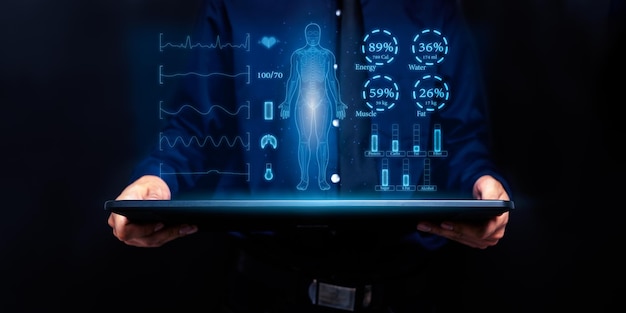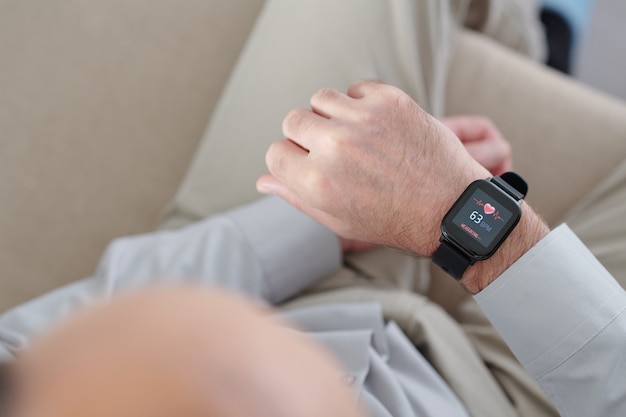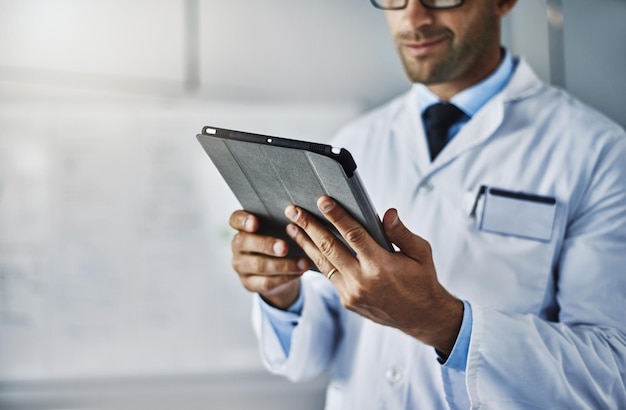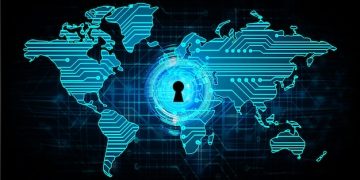The Impact of IoT on US Healthcare: 2025 Trends & Predictions

The Impact of IoT on US Healthcare: Trends and Predictions for 2025 focuses on how connected devices and data analytics are transforming patient care, operational efficiency, and healthcare management in the United States.
The convergence of the Internet of Things (IoT) and healthcare is rapidly reshaping the landscape of medical services in the United States. The **Impact of IoT on US Healthcare: Trends and Predictions for 2025** highlights the key advancements, challenges, and opportunities that this technological shift presents to patients, providers, and the healthcare industry as a whole.
The Rise of IoT in Healthcare
The integration of IoT in healthcare is no longer a distant prospect; it’s happening now. From wearable devices monitoring vital signs to smart hospital beds adjusting for patient comfort, IoT is permeating every aspect of US healthcare.
This section delves into the driving forces behind this surge and how it poised to evolve by 2025.
Key Drivers of IoT Adoption
Several factors are propelling the adoption of IoT in US healthcare:
- Aging Population: The growing elderly population requires continuous monitoring and remote care solutions.
- Chronic Disease Management: IoT devices enable better management of chronic conditions like diabetes and heart disease through real-time data collection and personalized interventions.
- Cost Reduction: IoT helps to reduce healthcare costs by preventing hospital readmissions, optimizing resource allocation, and improving efficiency.
- Technological Advancements: The improvements in sensor technology, data analytics, and wireless communication make IoT devices more reliable and accessible.

These driving forces are converging to create a significant impact on the way healthcare is delivered and managed in the US.
Remote Patient Monitoring (RPM)
Remote Patient Monitoring (RPM) is revolutionizing healthcare delivery, enabling providers to track patient health data from the comfort of their homes. This is particularly beneficial for patients with chronic conditions or those recovering from surgery.
Let’s explore how RPM is transforming US healthcare through better patient outcomes and convenience.
Benefits of RPM
RPM offers several advantages for both patients and healthcare providers:
- Improved Patient Outcomes: Continuous monitoring enables early detection of health issues and timely interventions.
- Reduced Hospital Readmissions: By proactively managing chronic conditions, RPM helps prevent hospital readmissions.
- Increased Patient Engagement: Patients become more involved in their own care through self-monitoring and feedback.
- Convenience and Accessibility: RPM brings healthcare services directly to patients, reducing the need for frequent trips to the doctor’s office.
RPM represents a paradigm shift in healthcare, empowering patients and providers alike. The Impact of IoT on US Healthcare: Trends and Predictions for 2025 shows RPM at the forefront of these changes.
Wearable Technology and Healthcare
Wearable technology, such as smartwatches and fitness trackers, is becoming increasingly integrated into healthcare. These devices provide valuable insights into patient activity levels, sleep patterns, and vital signs.
Understand how wearable tech may change the way healthcare is delivered by providing real-time data and personalized recommendations.
Applications of Wearable Tech
Wearable technology has a wide range of applications in healthcare:
- Fitness Tracking: Monitoring physical activity levels to promote healthier lifestyles.
- Vital Sign Monitoring: Tracking heart rate, blood pressure, and oxygen saturation.
- Medication Adherence: Reminding patients to take their medications on time.
- Sleep Monitoring: Analyzing sleep patterns to identify sleep disorders.

The data collected from wearable devices enables healthcare providers to offer personalized recommendations and interventions, leading to better patient outcomes.
Data Security and Privacy Concerns
As IoT devices generate massive amounts of patient data, data security and privacy become paramount concerns. Healthcare organizations must implement robust measures to protect sensitive patient information from cyber threats and unauthorized access.
Let’s examine the critical safeguards and compliance strategies necessary to ensure patient trust and adherence to regulatory standards in the age of interconnected healthcare.
Addressing Security Concerns
Several strategies can help mitigate data security and privacy risks:
- Encryption: Encrypting data both in transit and at rest to prevent unauthorized access.
- Access Controls: Implementing strict access controls to limit who can view and modify patient data.
- Data Anonymization: De-identifying patient data to protect privacy while still enabling data analysis.
- Compliance with Regulations: Adhering to regulations such as HIPAA (Health Insurance Portability and Accountability Act) to ensure data protection.
By addressing these concerns, healthcare organizations can build trust with patients and ensure the responsible use of **IoT** technology.
IoT and Hospital Operations
IoT is not just impacting patient care; it’s also transforming hospital operations. From smart beds adjusting to patient needs to real-time monitoring equipment, IoT is helping hospitals improve efficiency, reduce costs, and enhance patient satisfaction. **The Impact of IoT on US Healthcare: Trends and Predictions for 2025** includes operational enhancements as a key area of progress.
Explore the potential of IoT to revolutionize hospital management by streamlining processes and improving resource allocation.
Optimizing Hospital Operations with IoT
IoT can enhance various aspects of hospital operations:
- Asset Tracking: Tracking the location of medical equipment to prevent loss and optimize utilization.
- Inventory Management: Monitoring inventory levels and automating restocking to reduce waste and ensure availability.
- Energy Efficiency: Optimizing energy consumption through smart lighting and HVAC systems.
- Patient Flow Management: Tracking patient movement through the hospital to improve efficiency and reduce wait times.
These optimizations can lead to significant cost savings and improved patient experiences within the hospital setting.
Predictions for IoT in US Healthcare by 2025
Looking ahead to 2025, the integration of IoT into US healthcare is expected to deepen and expand. Several trends are likely to shape the future of healthcare IoT.
Discover the transformative trends expected to redefine healthcare delivery, and the crucial steps stakeholders can take to prepare for these advancements.
Future Trends
Here are some key predictions for IoT in US healthcare by 2025:
- Increased Adoption of AI and Machine Learning: AI will be used to analyze IoT data and provide insights for personalized care and predictive analytics.
- Expansion of Telemedicine: IoT devices will enable more advanced telemedicine services, including remote consultations and virtual check-ups.
- Development of New IoT-Enabled Medical Devices: New devices will be developed to address specific healthcare needs, such as continuous glucose monitoring and remote cardiac monitoring.
- Greater Focus on Interoperability: Efforts will be made to improve interoperability between different IoT devices and healthcare systems to enable seamless data exchange.
The impact of IoT on U.S. healthcare is expected to be profound by 2025, with technology enhancing patient care, operational efficiency, and healthcare management.
| Key Point | Brief Description |
|---|---|
| 📈 RPM Growth | Increased use of remote patient monitoring for chronic conditions. |
| ⌚ Wearable Integration | Wearable tech provides real-time health data, enhancing personalized care. |
| 🔒 Data Security | Focus on robust measures to protect patient data from cyber threats. |
| 🏥 Hospital Efficiency | IoT optimizes asset tracking, reducing costs and improving patient flow. |
Frequently Asked Questions
▼
IoT in healthcare refers to the use of internet-connected devices to monitor patients, collect data, and improve healthcare delivery.
▼
RPM improves outcomes by enabling continuous monitoring, early detection of issues, and timely interventions, reducing hospital readmissions.
▼
Potential security risks include unauthorized access to patient data, cyber attacks, and breaches that compromise patient privacy.
▼
Hospitals can benefit from IoT through improved asset tracking, inventory management, energy efficiency, and streamlined patient flow.
▼
Future trends include increased adoption of AI, expansion of telemedicine, and development of new IoT-enabled medical devices with a focus on interoperability.
Conclusion
In conclusion, The **Impact of IoT on US Healthcare: Trends and Predictions for 2025** illustrates the potential of connected technology to revolutionize healthcare delivery, improve patient outcomes, and optimize hospital operations. As we move closer to 2025, strategic collaboration and infrastructure development will be essential to realize the advantages of IoT in shaping a health-conscious future.





